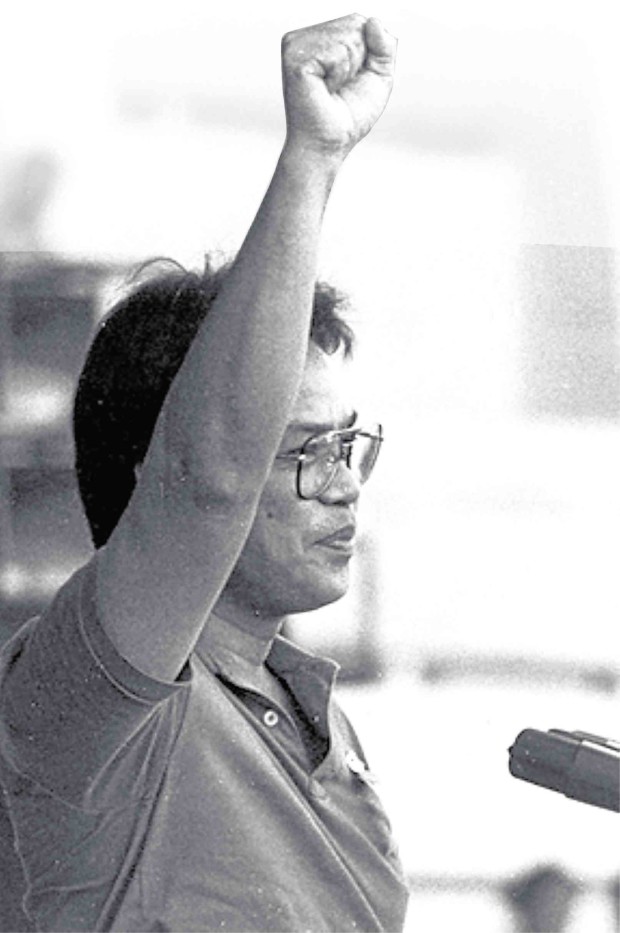(Reposting this article originally published in the Philippine Daily Inquirer on October 11, 2012.)
On November 13, 1986, Kilusang Mayo Uno (KMU) leader Rolando Olalia and his driver Leonor Alay-ay were found dead in Antipolo, Rizal. Their bodies were mutilated beyond recognition. A scar on Olalia’s leg was the only identifying mark that confirmed his identity.
The National Bureau of Investigation, in its report to then President Corzaon Aquino in 1986, said the killings were a prelude to the staging of “God Save the Queen,” a coup plot by Rebolusyonaryong Alyansang Makabansa (RAM) to rid the Aquino Cabinet of left-leaning members.
In April 1987, Task Force Olalia, which was formed to investigate the killings, filed two counts of murder against Gilberto Galicia and Sgt. Franco Espartero in the Antipolo Regional Trial Court.
In June 1990, Judge Marietta Legaspi acquitted Espartero for failure of the prosecution to prove his guilt beyond reasonable doubt, while Galicia was discharged and made a state witness.
In January 1998, the Department of Justice (DOJ) revived the case as a new witness, former T/Sgt. Medardo Dumlao Barreto came forward, implicating several RAM leaders in the surveillance and abduction of Olalia and Alay-ay.
Barreto said he surfaced out of fear as several military men who knew about the murders were ordered killed or mysteriously died in the past years.
Honasan
Several parties called on the justice department to look into the possible involvement of Sen. Gregorio Honasan, a RAM leader at the time of the murders.
In his 14-page sworn statement, Barreto said M/Sgt. Felizardo Cabanilla, transport officer of the then Ministry of National Defense, had boasted to him that he was personally ordered by Honasan to “clean up” the mess left behind by the vehicle used in tailing Olalia’s car.
Asked later to qualify his statement, Barreto said he did not directly implicate Honasan, stressing that Honasan’s supposed order was relayed by a third person, Cabanilla.
Honasan said he had “absolutely nothing to do” with the plot, and stressed that he participated only in three coup attempts against President Corazon Aquino. He said the “God Save the Queen” plot which allegedly involved the abduction and murder of Olalia was not among those hatched by the RAM.
2 murder cases
In May 1998, a five-man DOJ panel filed two separate cases of murder against 13 RAM members in the Antipolo Regional Trial Court.
Charged were retired Colonels Eduardo Kapunan and Col. Tirso Legaspi, ex-Capt. Ricardo Dicon, ex-Sergeants Gene Paris, Edgardo Sumido and Dennis Jabatan, ex-Staff Sergeants Freddie Sumagaysay and Jose Bacera, ex-Cpl. Cirilo Almario, ex-Staff Sgt. Fernando Casanova, ex-Sergeants Desiderio Perez and Filomeno Maligaya and Gilberto Galicia.
The DOJ panel said the 13 respondents, “with evident premeditation,” conspired and mutually helped one another, in killing the victims by taking advantage of their superior strength with the aid of armed men.
Kapunan and Legaspi sought immunity from prosecution, arguing that Proclamation No. 347 granted by President Fidel Ramos to rebel soldiers “extinguished their criminal liability.”
Arrest warrants
They said political assassinations, such as the Olalia-Alay-ay double murder case, could have been part of simulated events intended to create an unstable situation favorable for a coup.
In 2009, the Supreme Court dismissed their petition and ordered the filing of murder charges.
In February 2012, the Antipolo City Regional Trial Court issued arrest warrants against the 13 suspects.
On July 24, Perez surrendered to authorities and later pleaded “not guilty” to the murder charges. Inquirer Research
Sources: Inquirer Archives
